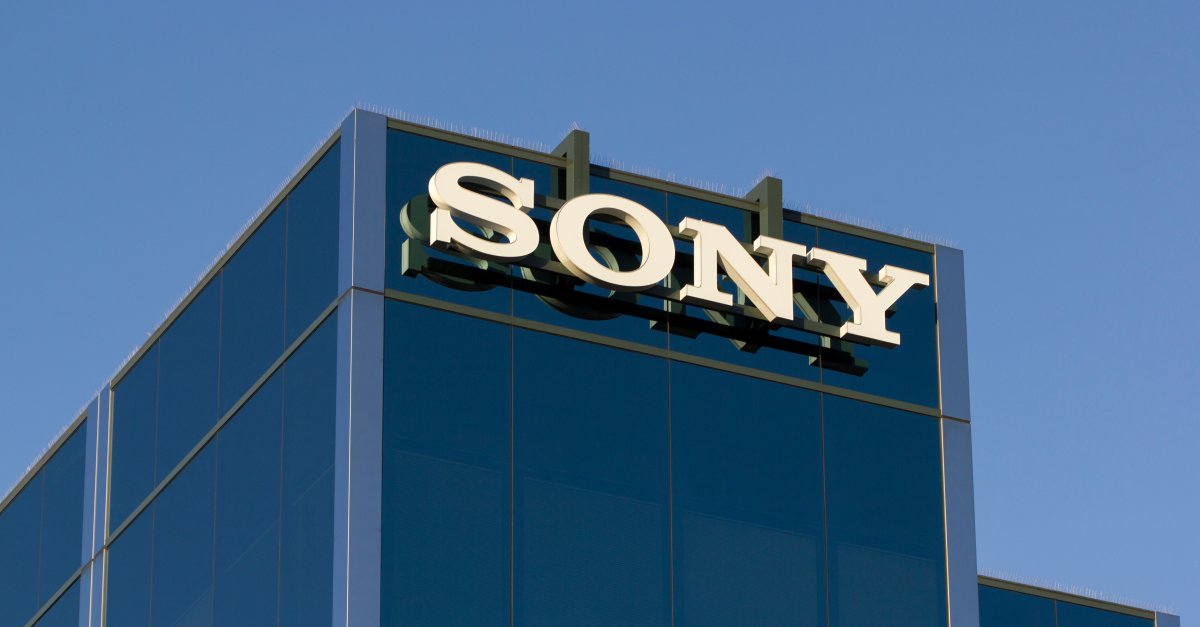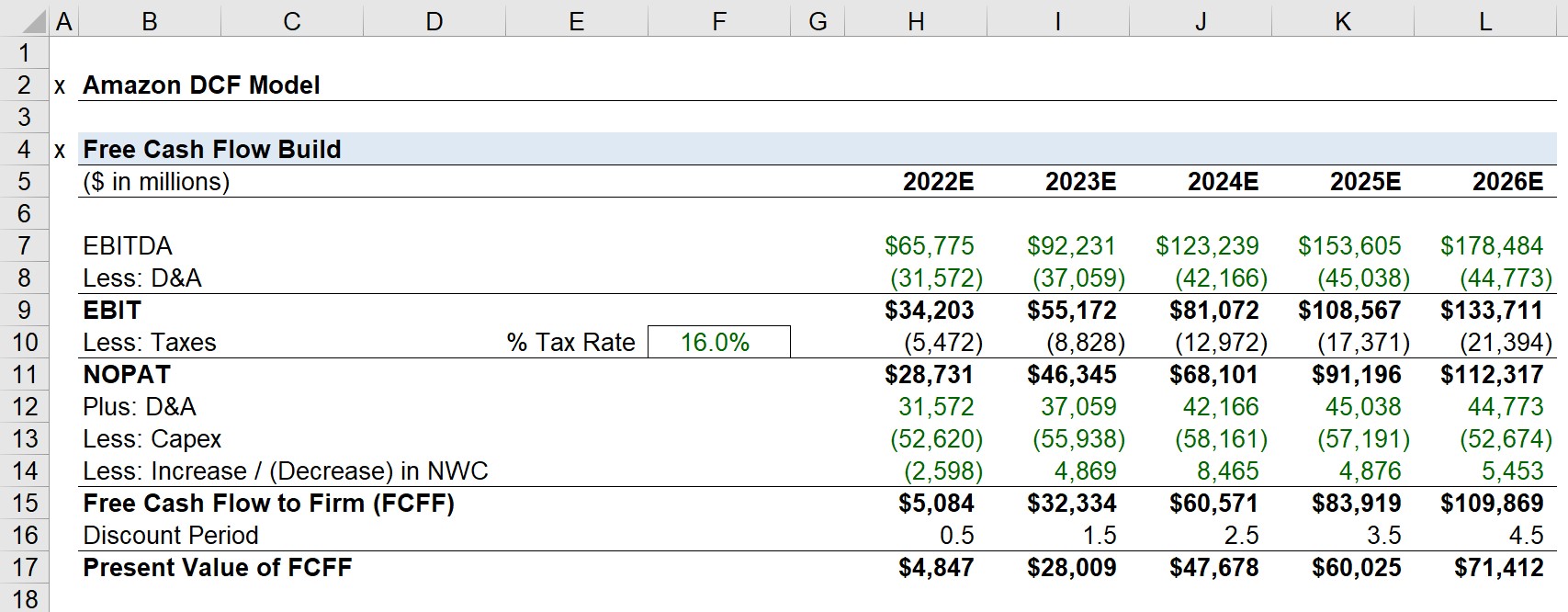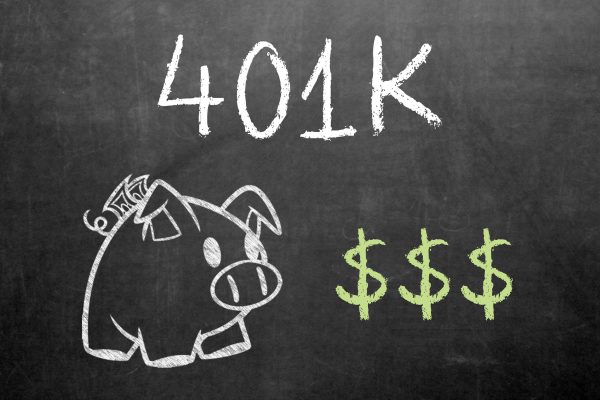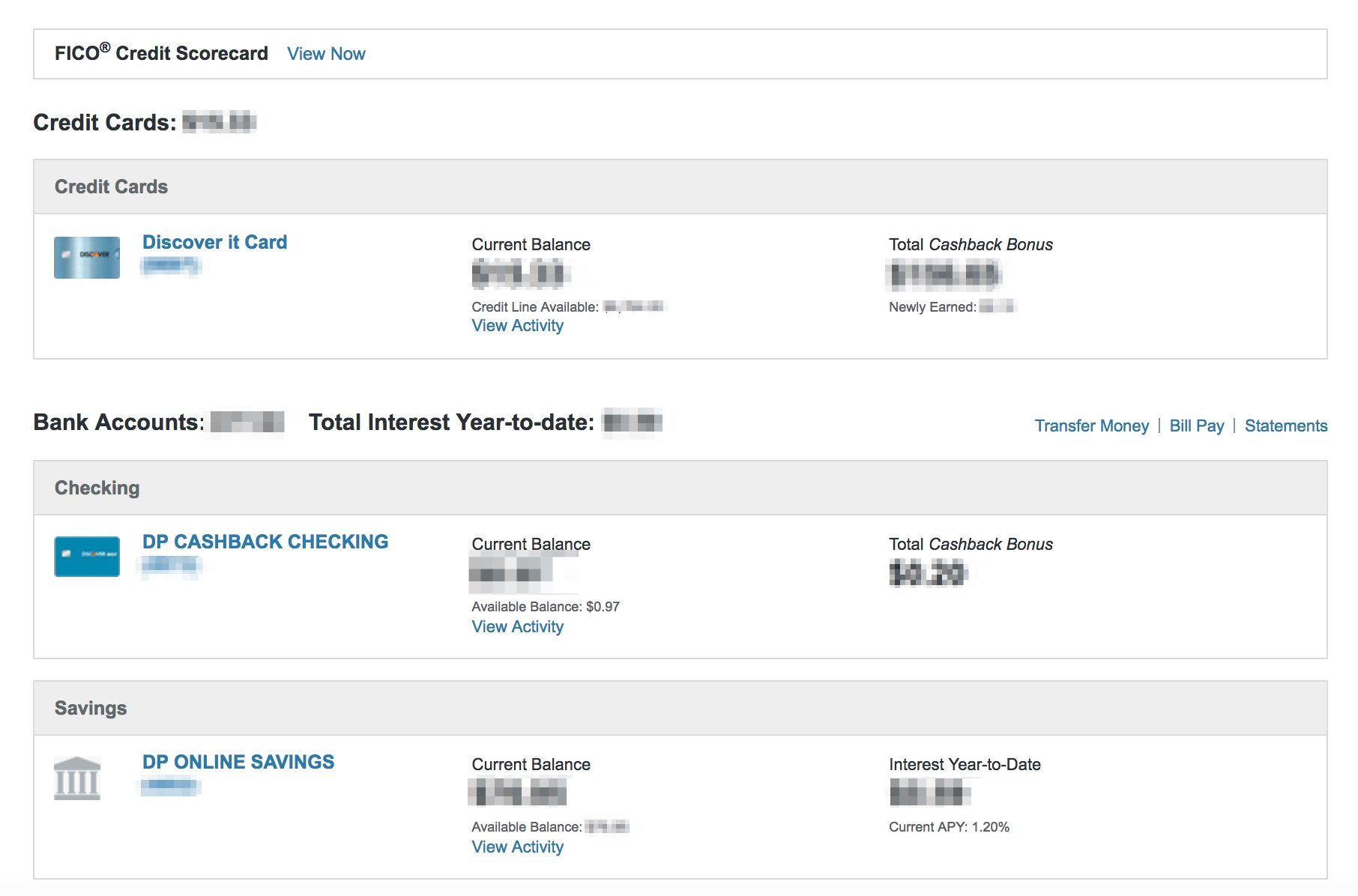

Finance
What Are The Factors Of Capital Structure
Modified: February 21, 2024
Discover the key factors affecting capital structure in finance. Gain insights on optimizing capital mix to maximize profitability and financial stability.
(Many of the links in this article redirect to a specific reviewed product. Your purchase of these products through affiliate links helps to generate commission for LiveWell, at no extra cost. Learn more)
Table of Contents
- Introduction
- Definition of Capital Structure
- Importance of Capital Structure
- Factors Influencing Capital Structure
- Business Risk
- Financial Risk
- Cost of Capital
- Profitability
- Tax Consideration
- Company Size and Growth Opportunities
- Nature of Industry
- Debt Capacity
- Investor Preferences
- The Impact of Capital Structure Decisions
- Conclusion
Introduction
Capital structure is a crucial aspect of financial management that determines how a company finances its operations through a combination of debt and equity. It refers to the mix of long-term debt, short-term debt, common equity, preferred equity, and retained earnings that a company utilizes to support its overall financial structure.
The decision on capital structure is vital, as it impacts the financial stability, profitability, and growth potential of a company. The right capital structure can enhance a firm’s ability to attract investors, manage risks, and make strategic investments. On the other hand, an inappropriate capital structure can lead to financial distress, reduce the company’s competitive advantage, and hinder its growth prospects.
Understanding the factors that influence capital structure choices is essential for companies and investors alike. By considering these factors, businesses can develop a sustainable and optimal capital structure that aligns with their specific needs, goals, and financial environment.
In the following sections, we will delve into the definition of capital structure, discuss its importance, and explore the key factors that influence capital structure decisions. By gaining insights into these factors, businesses can make informed and strategic choices when it comes to their capital structure.
Definition of Capital Structure
Capital structure refers to the composition of a company’s liabilities or the combination of debt and equity used to finance its operations. It represents the proportion of different sources of funds a company utilizes to maintain its financial structure. This combination of debt and equity represents the long-term financing of a company and plays a crucial role in determining its financial health and stability.
The two primary components of capital structure are debt and equity. Debt represents the borrowed capital obtained from various sources such as banks, financial institutions, or bondholders. It includes loans, bonds, and other forms of debt financing. Equity, on the other hand, represents the ownership interest in the company and includes common stock, preferred stock, and retained earnings.
A company’s capital structure decision involves determining the optimal mix of debt and equity financing that will maximize its value and fulfill its financial obligations. This decision is influenced by various factors, including the company’s risk appetite, cost of capital, profitability, tax considerations, industry dynamics, and investor preferences.
It is important to note that capital structure is different from financial structure. While capital structure focuses on long-term financing, financial structure encompasses both long-term and short-term financing, including working capital management and liquidity.
The capital structure decision has long-term implications for a company’s financial stability, profitability, and ability to undertake investments and expansion. It impacts the firm’s risk profile, as well as the cost of capital and overall financial flexibility.
By analyzing and understanding the key factors that influence capital structure decisions, companies can make well-informed choices that align with their financial objectives and maximize shareholder value.
Importance of Capital Structure
The capital structure of a company is of paramount importance as it directly impacts its financial performance, risk profile, and overall value. Here are some key reasons why capital structure plays a crucial role in the success of a company:
- Optimal financing mix: Determining the right combination of debt and equity financing is essential to optimize the cost of capital and maximize shareholder wealth. A well-balanced capital structure ensures that a company maintains a healthy debt-to-equity ratio, avoiding excessive debt that can lead to financial instability.
- Managing financial risk: Capital structure decisions affect the risk level of a company. Higher levels of debt increase financial risk due to obligations to repay interest and principal, while more equity financing provides a cushion against financial distress. By carefully managing its capital structure, a company can strike a balance between risk and return.
- Enhancing profitability: The right capital structure can help a company optimize its profitability by minimizing the cost of capital. Debt financing often comes with a lower cost compared to equity, allowing companies to benefit from the interest tax shield. By reducing the cost of capital, companies can improve their profitability and return on investment.
- Supporting growth and investment: A well-planned capital structure provides a stable financial foundation for companies to undertake investments and expand their operations. It enables businesses to access the necessary funds for research and development, acquisitions, and capital expenditures, facilitating growth and market expansion.
- Attracting investors: The capital structure of a company is a critical factor that potential investors evaluate when making investment decisions. A solid and balanced capital structure demonstrates financial discipline and stability, making the company more appealing to investors and lenders.
Ultimately, an optimal capital structure ensures that a company has the necessary financial resources to support its growth initiatives, manage risks effectively, and maximize shareholder value. Therefore, it is essential for businesses to carefully evaluate and adjust their capital structure as part of their overall financial management strategy.
Factors Influencing Capital Structure
Several factors influence the capital structure decisions of a company. Understanding these factors can help businesses make informed choices that align with their financial goals and market conditions. Here are some key factors that play a crucial role in determining capital structure:
- Business Risk: The level of business risk associated with a company’s operations influences its capital structure. Higher business risk may lead to a conservative capital structure, with a greater reliance on equity financing to mitigate the risk. On the other hand, companies with lower business risk may opt for a more leveraged capital structure to take advantage of the tax benefits and increase returns to shareholders.
- Financial Risk: Financial risk, which refers to the company’s ability to meet its financial obligations, also impacts capital structure decisions. Companies with stable and predictable cash flows may lean towards higher debt financing to benefit from the tax advantages and lower cost of debt. However, companies with uncertain or cyclical cash flows may utilize more equity financing to reduce the risk of financial distress.
- Cost of Capital: The cost of capital, which represents the required return on a company’s investments, influences capital structure choices. If the cost of debt is lower than the cost of equity, a company may consider higher debt financing to reduce the overall cost of capital. Conversely, if the cost of debt is higher or if debt financing is limited, the company may rely more on equity financing.
- Profitability: A company’s profitability affects its capital structure decisions. Highly profitable firms often have more flexibility to take on debt without impacting their creditworthiness, allowing them to optimize their capital structure and benefit from the interest tax shield. Less profitable firms may rely more on equity financing due to limited access to debt or a higher risk of financial distress.
- Tax Consideration: The tax implications of different financing options impact capital structure decisions. Interest payments on debt are tax-deductible, providing a tax shield that reduces the overall cost of debt financing. As a result, companies in higher tax brackets may be more inclined to utilize debt financing to benefit from the tax advantages.
- Company Size and Growth Opportunities: The size and growth prospects of a company influence its capital structure choices. Larger companies with stable cash flows and a wide range of investment opportunities may be more comfortable taking on debt to finance their growth initiatives. Conversely, smaller companies or those operating in uncertain industries may opt for lower leverage to manage risk.
- Nature of Industry: The industry in which a company operates can impact its capital structure decisions. Some industries, such as utilities and telecommunications, may require significant capital investments, making higher debt financing necessary. On the other hand, industries with high levels of uncertainty or technological disruption may rely more on equity financing to maintain flexibility.
- Debt Capacity: The ability of a company to take on additional debt without jeopardizing its financial stability is crucial in determining the capital structure. Companies with strong cash flows, assets, and collateral may have a higher debt capacity and can handle more leverage. Conversely, companies with limited assets or cash flows may have lower debt capacity and opt for a more equity-based capital structure.
- Investor Preferences: The preferences of investors and stakeholders also influence capital structure decisions. Some investors may prefer less leverage and a more conservative capital structure, while others may be willing to accept higher risk in exchange for potential returns. Understanding investor preferences and market dynamics is essential for aligning capital structure choices with investor expectations.
It is crucial for companies to evaluate these factors in conjunction with their specific financial objectives, market conditions, and risk tolerance to determine the optimal capital structure that will support their long-term growth and financial stability.
Business Risk
Business risk is a critical factor that influences a company’s capital structure decisions. Business risk refers to the uncertainty and variability of a firm’s cash flows and profitability due to factors such as market competition, technological advancements, regulatory changes, and economic conditions.
Companies with high business risk typically have volatile cash flows and face a greater possibility of financial distress. Therefore, they tend to adopt a more conservative capital structure by relying more on equity financing to mitigate the risk. By having a higher proportion of equity in the capital structure, these companies have a larger financial cushion to absorb potential losses and fluctuations in cash flows.
On the other hand, companies with low business risk, such as those operating in stable and predictable industries, may opt for a more leveraged capital structure. They can take advantage of the tax benefits and lower cost of debt financing. By using debt to finance their operations, they can magnify their returns to shareholders while maintaining a lower cost of capital.
When considering the impact of business risk on capital structure decisions, it is important for companies to assess their industry dynamics, competitive position, and revenue stability. Industries with high barriers to entry or those that are less sensitive to economic fluctuations may have lower business risk, making them more suitable for higher leverage. Conversely, industries that are subject to rapid technological changes or intense competition may have higher business risk, necessitating a more conservative capital structure.
In addition to industry dynamics, other factors such as a company’s product diversification, customer base, and geographic reach also contribute to its business risk. A company with a well-diversified product portfolio, a broad customer base, and a presence in multiple markets may have a lower level of business risk, enabling it to consider higher leverage in its capital structure.
Overall, the level of business risk plays a crucial role in shaping a company’s capital structure decisions. By carefully assessing and understanding their business risk profile, companies can strike the right balance between debt and equity financing, ensuring the optimal capital structure that aligns with their risk tolerance and financial objectives.
Financial Risk
Financial risk is a significant factor that influences a company’s capital structure decisions. Financial risk refers to the ability of a company to meet its financial obligations and manage its debt obligations effectively. It is associated with the potential for financial distress or the inability to generate sufficient cash flows to cover interest and principal payments.
Companies with high financial risk tend to prefer a more conservative capital structure to mitigate the risk of default. They rely more on equity financing or use a lower amount of debt. By reducing their debt levels, these companies can reduce the risk of financial distress and maintain their financial stability.
On the other hand, companies with low financial risk, such as those with stable and consistent cash flows, may choose a more leveraged capital structure. They can take advantage of the tax benefits and lower cost of debt financing. By using debt to finance their operations, they can magnify their returns to shareholders and optimize their capital structure.
The assessment of financial risk involves analyzing various factors, including the company’s debt-to-equity ratio, interest coverage ratio, and cash flow generation. A higher debt-to-equity ratio indicates a higher level of financial risk, as it suggests a larger proportion of debt obligations relative to equity. Similarly, a lower interest coverage ratio, which measures a company’s ability to meet interest payments, indicates a higher level of financial risk.
Other factors that impact financial risk include the company’s cash flow stability, liquidity position, and ability to access capital markets. Companies with volatile cash flows or limited access to external financing options may opt for a more conservative capital structure to ensure their ability to meet debt obligations.
Additionally, macroeconomic factors, such as interest rate fluctuations and credit market conditions, also influence the financial risk of a company. A company operating in an environment of high interest rates or tight credit markets may favor a more conservative capital structure to mitigate the risk of rising interest expenses or difficulty in accessing additional financing.
Consideration of financial risk is crucial in capital structure decisions. By evaluating their financial risk profile and analyzing key financial metrics, companies can determine the appropriate mix of debt and equity financing that balances the risk-reward tradeoff, ensuring their long-term financial stability and sustainability.
Cost of Capital
The cost of capital is a significant factor that influences a company’s capital structure decisions. It refers to the return expected by investors and lenders in exchange for providing funds to the company. The cost of capital represents the minimum rate of return that a company must earn on its investments to satisfy its investors.
When considering the cost of capital, companies evaluate the cost of both debt and equity financing. Debt financing typically has a lower cost compared to equity financing, as interest payments are tax-deductible and lenders have a priority claim on the company’s assets. Equity financing, on the other hand, involves a higher cost due to the absence of tax advantages and the higher risk borne by equity investors.
The optimal capital structure seeks to minimize the weighted average cost of capital (WACC), which represents the average cost of all the sources of capital used by the company. The WACC takes into account the cost and proportion of debt and equity in the capital structure.
Companies with a lower cost of debt and a higher tax rate may opt for a more leveraged capital structure to take advantage of the tax benefits and lower their overall cost of capital. By utilizing debt financing, these companies can reduce their WACC and increase their returns to shareholders.
Conversely, companies with higher costs of debt financing or limited access to debt may rely more on equity financing, leading to a less leveraged capital structure. These companies prioritize maintaining financial stability and avoiding the risk of financial distress.
The cost of capital is influenced by various factors, including the risk profile of the company, prevailing market interest rates, market conditions, and the company’s credit rating. Higher-risk companies face higher borrowing costs, as lenders demand a higher return to compensate for the increased risk.
Company-specific factors, such as profitability, creditworthiness, and growth prospects, also impact the cost of capital. Strong profitability and positive growth outlook can result in a lower cost of capital, as investors perceive the company as less risky and more likely to generate attractive returns.
Understanding the cost of capital is crucial in capital structure decisions. By analyzing the cost and availability of different financing options, companies can create an optimal capital structure that minimizes the overall cost of capital and maximizes shareholder value.
Profitability
Profitability is a key factor that influences a company’s capital structure decisions. Profitability refers to the ability of a company to generate consistent earnings and returns on investment. It plays a crucial role in determining the optimal mix of debt and equity financing that a company should employ.
Companies with strong profitability often have more flexibility in their capital structure decisions. They can comfortably take on debt without jeopardizing their creditworthiness and financial stability. These companies may opt for higher leverage to benefit from the tax advantages and lower cost of debt financing. By utilizing debt, they can magnify their returns to equity shareholders.
Less profitable companies, on the other hand, may rely more on equity financing due to limited access to debt or higher risk of financial distress. They may have difficulty meeting interest payments or repaying debt obligations, which can negatively impact their credit ratings and increase borrowing costs. These companies prioritize maintaining financial stability and avoiding the risk of default.
Profitability is assessed by various financial metrics, including the return on assets (ROA), return on equity (ROE), and net profit margin. A higher ROA and ROE indicate better profitability and may encourage companies to consider higher leverage in their capital structure. A healthy net profit margin indicates efficient cost management and helps generate sufficient cash flows to service debt obligations.
It is important to note that the relationship between profitability and capital structure is not linear. While higher profitability may allow companies to take on more debt, excessively high levels of debt can increase financial risk and erode profitability. Therefore, companies must strike a balance between maximizing profitability and maintaining a sustainable capital structure.
Furthermore, the industry in which a company operates can influence the impact of profitability on capital structure decisions. Industries with higher operating margins and stable cash flows, such as technology or healthcare, may be more comfortable with higher leverage due to their strong profitability. On the other hand, industries with thin profit margins or higher business risk, such as retail or hospitality, may opt for lower leverage to manage risk.
In summary, profitability is a key consideration in capital structure decisions. Companies with strong profitability can leverage their positive financial performance to optimize their capital structure and generate higher returns to shareholders. However, companies with lower profitability may prioritize financial stability and opt for a more conservative capital structure to avoid the risk of financial distress.
Tax Consideration
Tax consideration is a crucial factor that influences a company’s capital structure decisions. It refers to the impact of taxes on the cost of capital and the overall financial structure of a company.
The tax advantages associated with debt financing make it an attractive option for many companies. Interest payments on debt are generally tax-deductible, which reduces the taxable income and lowers the overall tax liability. This tax shield from interest expenses can significantly reduce the cost of debt financing for companies.
As a result, companies operating in higher tax brackets may be inclined to utilize more debt in their capital structure to optimize their tax advantage. This allows them to take advantage of the interest tax shield and lower their cost of capital.
On the other hand, equity financing does not provide the same tax benefits as debt financing. Dividend payments to equity shareholders are not tax-deductible expenses, and companies do not receive a tax benefit from issuing equity. As a result, equity financing tends to have a higher cost compared to debt financing.
However, it is important for companies to consider the potential risks associated with excessive debt. Although debt financing offers tax advantages, it also increases the financial risk of a company. Taking on too much debt can lead to financial distress and impact the company’s credit rating, resulting in higher borrowing costs in the future.
Additionally, tax laws and regulations may vary across different jurisdictions, which can affect a company’s tax consideration in capital structure decisions. Companies need to consider the tax implications of debt financing and any potential limitations or changes in tax regulations that may impact their ability to fully utilize the tax advantages of debt.
Overall, tax consideration is a critical factor in capital structure decisions. By carefully evaluating the tax implications and potential tax benefits associated with different financing options, companies can optimize their capital structure to minimize the overall tax burden and maximize shareholder value.
Company Size and Growth Opportunities
The size of a company and its growth opportunities play a significant role in determining its capital structure decisions. Company size refers to the scale and magnitude of a company’s operations, while growth opportunities represent the potential for future expansion and investment.
Larger companies often have more access to various financing options due to their established reputation, market presence, and financial stability. They can tap into the debt market and negotiate favorable terms, allowing them to take on higher levels of debt in their capital structure. These larger companies may utilize debt financing to fund acquisitions, research and development, and other growth initiatives.
Smaller companies, on the other hand, may face more challenges in accessing debt financing due to their relatively limited size and resources. They may rely more on equity financing to fund their operations and growth opportunities. Equity financing can provide flexibility and enable smaller companies to raise capital from investors who are willing to take on higher risk in exchange for potential returns.
In terms of growth opportunities, companies with significant growth potential may prefer a more leveraged capital structure to finance their expansion plans. They may seek to use debt to fund new projects or enter new markets, taking advantage of the potential returns on investment. Higher leverage can amplify returns to equity shareholders in the case of successful growth initiatives.
Conversely, companies with fewer growth opportunities or those operating in industries with limited expansion prospects may adopt a more conservative capital structure. They may prioritize maintaining financial stability and avoiding excessive risk, opting for a lower level of debt or more equity financing.
It is important for companies to carefully evaluate their growth opportunities and align their capital structure decisions accordingly. Factors such as industry dynamics, market conditions, competitive landscape, and access to capital markets should all be taken into consideration.
Furthermore, the stage of the company’s lifecycle also plays a role in its capital structure decisions. Startups, for example, may rely heavily on equity financing to fund their early-stage growth and establish their business. As they mature and grow, they may incorporate debt financing to expand their operations and capitalize on growth opportunities.
Ultimately, the size of a company and its growth opportunities are crucial factors in capital structure decisions. By assessing these factors, companies can determine the appropriate mix of debt and equity financing that balances their growth objectives, financial stability, and market conditions.
Nature of Industry
The nature of the industry in which a company operates is an important factor that influences its capital structure decisions. Different industries have varying characteristics, risks, and financial requirements, which can significantly impact the optimal capital structure for a company.
Industries with stable and predictable cash flows, such as utilities or essential services, often have a higher capacity for debt and may opt for a more leveraged capital structure. These industries typically generate consistent revenue streams and have lower business risk, allowing them to take on higher levels of debt to finance their operations and investments.
On the other hand, industries that are more vulnerable to economic fluctuations or technological disruptions may opt for a more conservative capital structure. Industries with high business risk, such as technology or biotechnology, may experience significant variability in cash flows and face uncertain market conditions. As a result, they may prefer a lower level of debt and focus more on equity financing to maintain financial stability and flexibility.
Similarly, industries with high capital requirements, such as manufacturing or infrastructure development, may rely more on debt financing to fund their capital expenditures. They often need substantial investments in machinery, equipment, or infrastructure, making debt financing an attractive option due to its lower cost and longer repayment periods. These industries may have a higher debt-to-equity ratio in their capital structure.
The competitive dynamics of the industry can also influence capital structure decisions. Highly competitive industries with thin profit margins may opt for a more conservative capital structure to minimize financial risk. They may prioritize maintaining financial stability and avoiding excessive reliance on debt, which could increase interest expenses and negatively impact profitability.
The regulatory environment of the industry can pose additional challenges or opportunities for companies in their capital structure decisions. Industries subject to regulatory constraints or government oversight may have limitations on debt levels or specific requirements for equity financing. Companies operating in regulated industries, such as banking or insurance, must adhere to regulatory capital adequacy requirements, which can impact their capital structure choices.
Lastly, the cyclical nature of the industry can influence capital structure decisions. Industries that are more prone to economic cycles, such as construction or automotive, may choose a more conservative capital structure to mitigate the risks associated with economic downturns. They may focus on maintaining financial strength and liquidity to withstand challenging market conditions.
In summary, the nature of the industry in which a company operates is a crucial factor in capital structure decisions. By considering industry dynamics, business risk, capital requirements, competitive landscape, and regulatory environment, companies can determine the appropriate capital structure that aligns with their industry-specific needs and risk tolerance.
Debt Capacity
Debt capacity refers to the ability of a company to take on additional debt without jeopardizing its financial stability and ability to meet its financial obligations. It represents the maximum amount of debt a company can reasonably support given its cash flow, assets, and creditworthiness.
Evaluating debt capacity is crucial in determining a company’s optimal capital structure. Companies must strike a balance between utilizing debt to benefit from its advantages, such as tax benefits and lower cost of capital, while avoiding excessive leverage that could lead to financial distress or increased borrowing costs.
Several factors influence a company’s debt capacity:
- Cash Flow: The company’s ability to generate consistent and sufficient cash flows to service its debt obligations plays a significant role in determining debt capacity. Lenders assess a company’s cash flow coverage ratio and debt service coverage ratio to evaluate its ability to repay debt. Companies with strong and stable cash flows have a higher debt capacity.
- Assets and Collateral: The value and quality of a company’s assets can impact its debt capacity. Lenders often consider collateral, such as real estate, inventory, or equipment, to secure the debt. The level of assets and their marketability influence the amount of debt a company can obtain.
- Creditworthiness: A company’s credit rating and creditworthiness affect its debt capacity. Companies with higher credit ratings and better financial standing are perceived as less risky by lenders, allowing them to access debt financing at favorable terms and higher amounts.
- Financial Ratios: Lenders assess various financial ratios, such as debt-to-equity ratio, leverage ratio, and interest coverage ratio, to evaluate a company’s debt capacity. Lower debt ratios and higher interest coverage ratios indicate a higher debt capacity and lower financial risk.
- Business Outlook: The overall business outlook and industry dynamics also influence a company’s debt capacity. Companies operating in industries with stable growth prospects and favorable market conditions may have a higher debt capacity. Conversely, companies in industries facing uncertainty or economic downturns may have a lower debt capacity.
- Legal and Contractual Obligations: Existing legal and contractual obligations, such as lease agreements, pension payments, or debt covenants, impact a company’s debt capacity. These obligations reduce the available income for servicing additional debt and may restrict the company’s ability to take on more debt.
Assessing debt capacity requires a comprehensive analysis of a company’s financial health, cash flow projection, asset valuation, and risk profile. It is essential for companies to regularly monitor their debt capacity to ensure they maintain a healthy capital structure and avoid excessive risk.
By understanding their debt capacity, companies can determine the amount of debt they can reasonably take on to optimize their capital structure while ensuring their ability to meet ongoing financial obligations and maintain financial stability.
Investor Preferences
Investor preferences are an important consideration in determining a company’s capital structure decisions. The preferences and expectations of investors, including shareholders, bondholders, and other capital providers, can influence the optimal mix of debt and equity financing that a company adopts.
Investors have varying risk appetites and preferences when it comes to investing in companies. Some investors may prioritize capital preservation and prefer companies with lower levels of debt and lower financial risk. These investors may be more inclined towards companies with conservative capital structures that prioritize financial stability.
On the other hand, other investors may seek higher returns and be willing to accept higher risk. They may be more attracted to companies with higher leverage and the potential for greater returns through increased financial leverage. These investors may perceive higher debt levels as an opportunity to benefit from interest tax shields and the potential for higher equity returns.
Market conditions, economic environment, and prevailing interest rates can all impact investors’ preferences regarding the risk-reward tradeoff. During periods of low interest rates, investors may be more inclined to favor higher leverage and accept higher risk to achieve attractive returns, as the cost of debt is lower. Conversely, during periods of economic uncertainty or high interest rates, investors may prefer lower leverage and less financial risk in their investment portfolios.
Additionally, different types of investors may have specific requirements or restrictions when it comes to capital structure preferences. For example, institutional investors, such as pension funds or insurance companies, may have guidelines or regulatory constraints that limit their exposure to certain levels of debt. Bondholders may have specific requirements for credit ratings or debt coverage ratios.
Companies need to consider these investor preferences when determining their capital structure. By aligning their capital structure choices with the preferences of their target investors, companies can attract and retain the capital necessary for their growth and expansion plans.
Regular communication with shareholders and investors is crucial to understand their preferences and expectations regarding capital structure. Investor relations teams and management must provide transparent information about the company’s financial position, risk management strategies, and future plans to build confidence and trust among investors.
Understanding and accommodating investor preferences in capital structure decisions can help companies effectively raise capital, maintain investor support, and create a positive perception of the company’s financial health and stability.
The Impact of Capital Structure Decisions
The capital structure decisions of a company have far-reaching implications on its financial performance, risk profile, and overall value. These decisions can significantly impact various aspects of a company’s operations, as well as its relationships with stakeholders. Here are some key impacts of capital structure decisions:
- Financial Performance: Capital structure decisions play a crucial role in shaping a company’s financial performance. The optimal capital structure can help maximize profitability by minimizing the cost of capital and balancing debt and equity financing. Additionally, efficient capital structure decisions ensure the availability of funds to support growth initiatives and investment projects, which can contribute to revenue and earnings growth.
- Risk Profile: The capital structure directly influences a company’s risk profile. Excessive debt can increase the risk of financial distress, as the company must meet interest and principal payments. On the other hand, an over-reliance on equity financing may dilute ownership and impact control, affecting the risk and return expectations of shareholders. By carefully managing the capital structure, companies can strike a balance between risk and reward.
- Cost of Capital: Capital structure decisions have a direct impact on the cost of capital, which represents the return expected by investors and lenders. A well-balanced capital structure can minimize the company’s overall cost of capital, improving profitability and financial performance. The cost of capital influences investment decisions, valuation, and shareholder returns.
- Flexibility and Financial Stability: The capital structure affects a company’s financial flexibility and stability. A well-designed capital structure provides the flexibility to adapt to changing market conditions, undertake strategic initiatives, and weather economic downturns. An appropriate mix of debt and equity financing ensures the company has the resources to meet financial obligations and manage unexpected expenses.
- Market Perception and Investor Confidence: Capital structure decisions can influence market perception and investor confidence. A well-thought-out and transparent capital structure can enhance the company’s reputation, attract investors, and build trust among stakeholders. It signals financial discipline, stability, and an effective risk management approach.
- Access to Capital: The capital structure affects the company’s access to external capital sources, such as debt markets or equity investors. A strong and optimal capital structure can improve a company’s creditworthiness, making it easier to obtain debt financing at favorable terms. Likewise, an attractive equity story resulting from the right capital structure can increase access to equity capital.
- M&A and Growth Initiatives: Capital structure decisions impact a company’s ability to undertake mergers and acquisitions (M&A) and pursue growth opportunities. The availability of debt financing can support M&A transactions, while an equity financing strategy can provide the necessary capital for organic growth or market expansion. The capital structure determines the financial resources available for strategic initiatives.
It is important for companies to regularly evaluate and adjust their capital structure to align with changing market conditions, company objectives, and risk tolerance. By making informed capital structure decisions, companies can enhance their financial position, maximize shareholder value, and position themselves for long-term success.
Conclusion
Capital structure decisions play a crucial role in the financial management of a company. The optimal mix of debt and equity financing determines the company’s financial stability, profitability, risk profile, and ability to pursue growth opportunities. By carefully considering the factors that influence capital structure decisions, companies can make informed choices that align with their objectives and market conditions.
Factors such as business risk, financial risk, cost of capital, profitability, tax considerations, company size, industry dynamics, debt capacity, and investor preferences all impact capital structure decisions. Understanding these factors and their interplay is essential for achieving an optimal capital structure that balances risk and return.
Capital structure decisions have significant impacts on a company’s financial performance, risk profile, and relationships with stakeholders. A well-balanced capital structure can enhance profitability, minimize the cost of capital, and improve financial flexibility. It can also positively influence market perception and investor confidence, facilitating access to external capital sources.
Companies must regularly evaluate and adjust their capital structure to adapt to changing market conditions and maintain a sustainable financial structure. Regular communication with investors and stakeholders is crucial to understanding their preferences and expectations regarding capital structure choices.
In conclusion, capital structure decisions are critical for a company’s financial health and long-term success. By carefully analyzing the various factors influencing capital structure decisions and making well-informed choices, companies can optimize their financial structure, drive growth, and maximize shareholder value.














